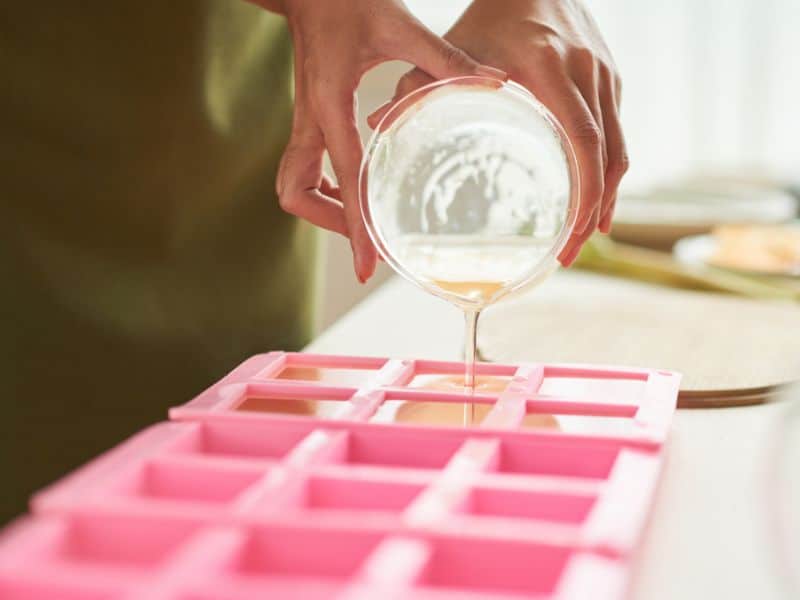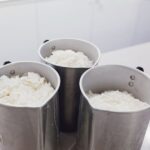Are you considering using melt-and-pour soap? While these soaps are convenient and easy to use, it’s important to understand how they work and what their effects may be on your skin. Let’s explore the benefits and drawbacks of using melt-and-pour soap, as well as some tips for getting the most out of this type of product. We’ll also look at some alternative options if you’re still not sure if melt-and-pour is right for you.
Melt and pour soap is good for the skin. Melt and pour soap is essentially a finished soap product that has completed the saponification process and is safe for the skin. You can customize it with a variety of colors, fragrances, and exfoliants to meet your needs.
It is also a great way to introduce novice soap makers to the art of making soap. The biggest benefit of using melt-and-pour soaps is that they are very easy to use, and require no special equipment or ingredients. Let’s take a closer look.
Benefits of Melt and Pour Soap for Skin
As with moth things, melt and pour soap has some benefits and drawbacks. Here are some of the benefits of melt and pour soap.
Moisturizing properties
One of the main benefits of melt and pour soap is its moisturizing properties. Glycerin, a key ingredient in many melt and pour soap bases, is a natural humectant that helps to attract moisture to your skin. This can help to keep your skin feeling soft and hydrated, especially in dry climates or during the colder months.
Gentle on skin
Melt and pour soap is also known for being gentle on skin. Unlike some traditional soaps, which can be harsh and drying, melt and pour soap is formulated to be gentle and non-irritating. This makes it a great option for those with sensitive or delicate skin.
Customizable
Another benefit of melt and pour soap is its versatility and customizability. With a variety of soap bases, fragrances, colorants, and essential oils to choose from, you can create a soap that’s tailored to your specific skin type and preferences. Whether you’re looking for a soothing lavender-scented soap or a bright and energizing citrus blend, the possibilities are endless.
Suitable for sensitive skin
Melt and pour soap is a great option for those with sensitive skin. Because it’s formulated to be gentle and non-irritating, it’s less likely to cause allergic reactions or flare-ups. Plus, many melt and pour soap bases are free from common irritants like sulfates, parabens, and phthalates, making them a safer option for sensitive skin.
Drawbacks of Melt and Pour Soap for Skin
Melt and poor soaps are not without their drawbacks. Let’s take a look at a few of them now.
Limited lather
Melt and pour soap has limited lather because it often contains a high percentage of glycerin, which is a natural humectant that attracts moisture. While this makes the soap more moisturizing, it can also limit the amount of lather produced.
Lather is important in skin cleansing because it helps to remove dirt, oil, and other impurities from the skin. It also helps to create a barrier between the skin and the outside world, protecting it from environmental stressors.
Limited exfoliating properties
Melt and pour soap has limited exfoliating properties because it’s often made with a smooth soap base that doesn’t contain any exfoliating agents like oatmeal, ground coffee, or seeds.
Exfoliation is important in skin cleansing because it helps to remove dead skin cells, unclog pores, and promote cell turnover. This can lead to brighter, smoother, and more even-toned skin.
May contain artificial additives
Melt and pour soap often contains artificial additives like synthetic fragrances, colors, and preservatives.
Artificial additives can irritate the skin, causing dryness, redness, and itching. They can also disrupt the skin’s natural pH balance, leading to acne, eczema, and other skin conditions.
To identify artificial additives in melt and pour soap, look for ingredients like fragrance oils, FD&C colors, and preservatives like parabens and phthalates. Also, make sure you are buying from a reputable supplier to make sure you get the best quality product.
Alternative to Melt and Pour Soap
Melt and Pour soap is a popular option for making soap at home, but it may not be the best option for everyone. Fortunately, there are several alternatives to Melt and Pour soap that you can try. In addition to natural soap options, such as making soap from scratch or purchasing natural soap from a local soap maker, you can also explore cold process and hot process soap methods.
Cold Process Soap
Cold process soap making involves combining lye and oils and allowing the mixture to cure over several weeks. This method of soap making allows for greater control over the ingredients used and can result in a high-quality, nourishing bar of soap. However, it does require more time and patience than Melt and Pour soap making.
To make cold process soap, you will need to carefully measure and mix lye and oils to create a chemical reaction that turns the mixture into soap. You can add natural colorants, essential oils, and other additives to create a customized soap bar. Once the soap mixture is poured into a mold, it needs to cure for several weeks before it can be used.
Hot Process Soap
Hot process soap making is similar to cold process soap making, but involves cooking the soap mixture in a slow cooker or on a stove top. This method of soap making can be faster than cold process soap making and can result in a rustic, textured bar of soap.
To make hot process soap, you will need to mix lye and oils and cook the mixture until it reaches a specific temperature and consistency. Once the soap mixture is cooked, you can add natural colorants, essential oils, and other additives to create a customized soap bar. The soap can be poured into a mold and allowed to cool before it can be used.
Both cold process and hot process soap making require more time and effort than Melt and Pour soap making, but they offer greater control over the ingredients used and can result in high-quality, nourishing soap bars. When choosing a soap making method, consider your skill level, available time, and the desired outcome for your soap bar.
Melt and Pour Soap Tips
- Use a double boiler or microwave to melt the soap base slowly and evenly, stirring frequently.
- Add any colorants or fragrance oils after the soap base has melted and cooled to around 120-125°F (49-52°C) to prevent them from evaporating.
- Use silicone or plastic molds for easy release, or line metal molds with plastic wrap or parchment paper to prevent sticking.
- Spray your molds with rubbing alcohol before pouring in the soap to prevent bubbles and ensure a smooth finish.
- If adding botanicals or exfoliants, use a small amount and make sure they are evenly distributed to prevent uneven texture in the finished soap.
- Let the soap harden and cool completely before attempting to unmold or cut it. This can take several hours or even overnight.
- Wrap finished soap bars in plastic wrap or parchment paper to prevent them from sweating and becoming sticky in humid environments.
- Store unused soap base in a cool, dry place to prevent it from sweating or melting.
- Avoid overheating the soap base, as this can cause it to become grainy or develop a skin on the surface.
- Experiment with different additives and techniques to create unique and personalized soap bars.
The best tip of all is to take your time and try to have fun with it. If you can not have a little fun along the way then what is the point?
Frequently Asked Questions
Melt and pour soap does not typically go bad, but it can lose its scent over time. To extend the shelf life of your melt and pour soap, store it in a cool, dry place away from direct sunlight.
Melt and pour soap should be stored in a cool, dry place away from direct sunlight. If you have extra melt and pour soap that you won’t be using right away, it is best to keep it stored in an airtight container to prevent it from drying out.
You can typically reheat melt and pour soap up to three times without any issues. After the third reheat, it is best to discard the soap as the quality of the soap may deteriorate. It is important to follow the instructions on your melt and pour soap carefully to ensure that you get the best results.
Yes, melt and pour soap is generally considered safe for kids. However, it is important to check the ingredients of the soap before use, as some brands may contain fragrances or other additives that can be irritating to young skin.
Conclusion
In conclusion, although melt and pour soap can be an easy way to make soap at home, it may not always be the best option for everyone. If you want the highest quality melt and pour soap you have to be discerning when choosing your product. Find a great supplier and make sure to read all of the ingredients.
If you are looking for a more personalized bar of soap, consider exploring cold process or hot process soap making methods. Both require more time and effort but allow you greater control over the ingredients used. Before deciding which soap-making method is right for you, consider your skill level, available time, and desired outcome.
With that said, melt and pour soap is a great way to get your feet wet in the world of soap making!






